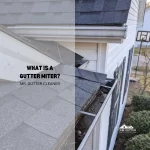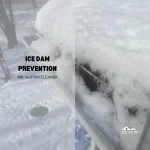Addressing loose gutters is a crucial aspect of home maintenance, pivotal for preserving the structural integrity and functionality of any residence.
Loose gutters can lead to significant water damage, foundation issues, and landscape erosion if not promptly addressed.
This guide focuses on providing homeowners with straightforward and effective strategies to identify, repair, and prevent common gutter problems.
With an emphasis on simplicity, the steps outlined are designed to equip individuals with the knowledge and confidence to tackle gutter repairs independently, using basic tools and materials.
Additionally, maintenance tips are offered to ensure gutters remain in optimal condition, safeguarding the home against potential water-related damages.
This essential information serves to empower homeowners, emphasizing preventive measures and the importance of regular gutter care as part of overall home maintenance efforts.
Furthermore, understanding the connection between well-maintained gutters and the home’s overall well-being highlights the necessity for proactive gutter management.
What Causes Gutters to Loosen?
Gutters loosen due to weather conditions and physical damage. Weather, including heavy rain, snow, and ice, expands and contracts gutter materials, leading to detachment.
Physical damage, such as falling branches or improper maintenance, exacerbates the issue, compromising gutter stability.
Table of Contents:
How Weather Conditions Affect Gutters
Weather significantly impacts gutters. Temperature fluctuations cause materials to expand and contract, weakening fasteners over time. Heavy rain and snow add weight, pulling gutters away from their mountings. Ice formation can block and distort gutters, increasing the risk of detachment.
The Impact of Physical Damage or Wear
Physical damage accelerates gutter loosening. Falling debris, like branches during storms, can dent or tear gutters, affecting their attachment to the roofline. Continuous exposure to elements without regular maintenance leads to wear, reducing gutter lifespan and effectiveness.
Preparing for Gutter Repair: Tools and Safety Tips
Proper preparation is fundamental for effective gutter repair. This includes gathering the necessary tools and adhering to safety measures to prevent accidents. Homeowners undertaking gutter repairs need a set of specific tools that facilitate the process, ensuring repairs are not only efficient but also safe.
Essential Tools for DIY Gutter Repair
For DIY gutter repair, homeowners require:
- Ladders to safely reach the gutters.
- Gloves to protect hands from sharp edges and debris.
- Gutter sealant for sealing leaks and gaps.
- A screwdriver or drill for tightening or replacing gutter hangers.
- A garden hose for testing water flow and leaks post-repair.
- Collecting these tools beforehand streamlines the repair process, making it straightforward and efficient.
Safety Precautions to Follow
Safety cannot be overstated during gutter repair. Key precautions include:
- Using a sturdy ladder and ensuring it is securely positioned.
- Wearing gloves and safety goggles to protect against debris and sharp edges.
- Never working alone, ensuring someone is nearby in case of an emergency.
- Avoiding repairs in adverse weather conditions, such as high winds or heavy rain, to prevent accidents.
Step 1: Inspecting the Gutters for Damage
The initial step in fixing loose gutters involves a thorough inspection to identify any signs of damage. This critical process allows homeowners to understand the extent of repair needed, ensuring that subsequent steps are effectively targeted towards resolving the core issues.
Identifying Common Signs of Loose Gutters
Common indicators of gutter damage include sagging sections, visible gaps between the gutter and the roofline, rust or holes in metal gutters, and water marks or damage on the exterior walls beneath the gutters.
Spotting these signs early can prevent more extensive damage to the home’s structure and foundation.
Assessing the Extent of Damage
After identifying signs of damage, assessing the extent involves checking for loose fasteners, evaluating the condition of the gutter material, and ensuring downspouts are clear and properly attached.
This assessment helps in determining whether a simple fix is sufficient or a more comprehensive repair is needed, potentially requiring professional assistance for complex issues.
Step 2: Cleaning the Gutters
Thorough cleaning is essential before repairing gutters. Removing debris allows for a clear assessment of damage and ensures repairs are effective. This step prevents further damage by ensuring water can flow freely, reducing the risk of leaks and overflows.
Effective Gutter Cleaning Techniques
Start by removing loose debris with a gutter scoop or gloves. Flush the gutters with a garden hose to clear out any remaining particles. For tougher clogs in downspouts, use a plumber’s snake to clear the pathway. This method ensures all blockages are removed, allowing for a comprehensive inspection and repair.
Preventing Damage During Cleaning
Use ladders safely, avoiding overreaching or placing them on unstable surfaces. Gentle handling of gutters is crucial; avoid pulling or pressing too hard to prevent bending or breaking. These precautions help maintain gutter integrity while ensuring personal safety during the cleaning process.
Step 3: Securing Loose Sections
After cleaning, the next critical step is securing any loose sections of the gutter. This not only stabilizes the gutters but also prevents future damage by ensuring they are firmly attached to the home’s exterior. Properly securing gutters enhances their longevity and functionality, safeguarding the home against water damage.
Tightening and Replacing Gutter Hangers
Loose gutters often result from failing hangers or spikes. Tightening existing hangers or replacing them with new, more durable options ensures gutters are securely attached. Use a drill or screwdriver to fasten hangers tightly against the fascia, checking for stability before proceeding to the next section. This action prevents sagging and detachment, crucial for gutter efficiency.
Ensuring Proper Gutter Alignment
Correct gutter alignment is paramount for effective water diversion. Gutters should slope towards downspouts at a slight angle, typically 1/4 inch for every 10 feet of gutter. This ensures water flows freely towards downspouts, reducing the risk of stagnation and overflow. Use a level to check the slope and adjust hangers accordingly to achieve proper alignment. This meticulous attention to detail prevents water damage to the home’s foundation and landscaping.
Step 4: Sealing Leaks and Gaps
Sealing leaks and gaps is essential in restoring gutter functionality and preventing water damage to the property. This step ensures that once the gutters are securely attached and properly aligned, they remain watertight and effective in channeling water away from the home’s foundation.
Choosing the Right Sealant for Gutters
Selecting an appropriate sealant is crucial for effective repairs. Silicone-based sealants are recommended for their durability and flexibility, which are essential qualities for withstanding various weather conditions. Ensure the chosen sealant is specifically designed for outdoor use and compatible with the gutter material, whether it be aluminum, vinyl, or copper.
Application Tips for a Watertight Seal
For a successful application, first ensure the gutter area to be sealed is dry and clean from any debris or old sealant remnants. Apply the sealant evenly along the seams or holes, using a caulking gun for precision. It’s important to smooth out the sealant with a putty knife or a gloved finger to ensure it fully covers the gap, creating a watertight barrier. Allow sufficient drying time as specified by the sealant manufacturer before testing the gutters for leaks. Proper application not only seals existing leaks but also helps prevent future issues, maintaining the gutter system’s integrity over time.
Step 5: Testing and Maintenance
After repairing and sealing the gutters, testing their functionality and setting a maintenance schedule are crucial final steps. This ensures the longevity of the gutters, preventing future issues, and maintaining the home’s protection against water damage.
Conducting a Water Flow Test
To test the gutters, use a garden hose to simulate rainfall, allowing water to flow through the gutters and downspouts. Observe the water’s path; it should travel smoothly without any spillage or leakage. This test helps identify any overlooked issues, ensuring the repairs have fully restored gutter functionality.
Setting a Maintenance Schedule for Gutters
Regular maintenance is key to preventing gutter problems. Schedule bi-annual cleanings to remove debris and inspect for wear and tear. Post-storm inspections are also advised to check for any immediate damages. Keeping gutters clean and in good repair prevents water damage to the home and ensures the gutters’ efficiency and durability. This proactive approach saves time and money by avoiding costly repairs resulting from neglect.
When to Seek Professional Gutter Repair Services
Recognizing when to seek professional gutter repair services is vital in maintaining the functionality and integrity of your home’s gutter system. While many gutter issues can be addressed through DIY efforts, certain situations necessitate the expertise and tools of professionals to ensure repairs are done safely and effectively.
Identifying Problems Beyond DIY Repair
Certain gutter problems require professional intervention, including:
- Extensive structural damage where large sections of the gutter system are sagging or detached.
- Persistent leaks that reoccur after DIY sealing attempts, indicating a more complex underlying issue.
- Gutters that consistently overflow despite being clean, which may suggest improper installation or the need for a system upgrade.
- These scenarios often involve challenges that exceed typical homeowner expertise and equipment, making professional services the most reliable option for resolution.
Benefits of Professional Gutter Maintenance
Seeking professional gutter maintenance comes with several benefits:
- Expertise: Professionals possess the knowledge to diagnose and fix complex gutter issues efficiently.
- Safety: Gutter repair can be hazardous. Professionals are equipped with the necessary safety gear and training to perform repairs without accidents.
- Longevity: Professional repairs and maintenance can extend the life of your gutters, preventing premature replacement costs.
- Warranty: Many professional services come with a warranty, offering peace of mind that if issues persist, further repairs will be covered.


